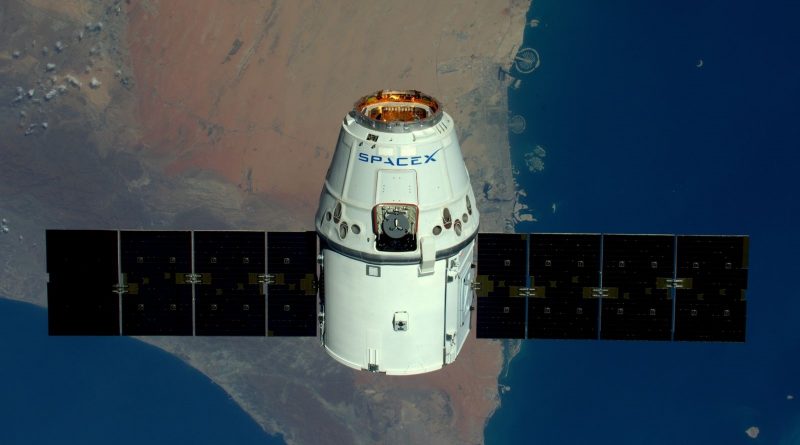Dragon Cargo Craft on Track for ISS Arrival after Orbit-Raising Maneuvers
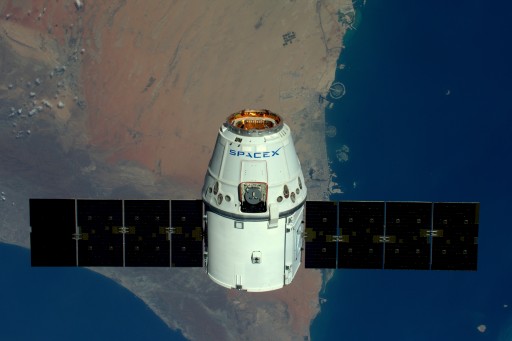
SpaceX’s Dragon cargo craft maneuvered into a higher orbit on Tuesday and is en-route to a Wednesday rendezvous with the International Space Station, aiming for a robotic capture at 11 UTC to mark the arrival of the vehicle’s precious science cargo eagerly awaited by the crew in orbit.
Packed with dozens of experiments, supplies for the Space Station and a group of 20 mice, Dragon lifted off atop a Falcon 9 rocket on Sunday on a three-day flight to the orbiting laboratory.
Sunday’s liftoff, coming at 14:39 UTC, marked the revival of Kennedy Space Center’s Launch Complex 39A that used to host NASA’s Saturn V rocket and the majority of flights of the Space Shuttle before being turned over to SpaceX that will operate the pad for ISS traffic and Falcon Heavy launches.
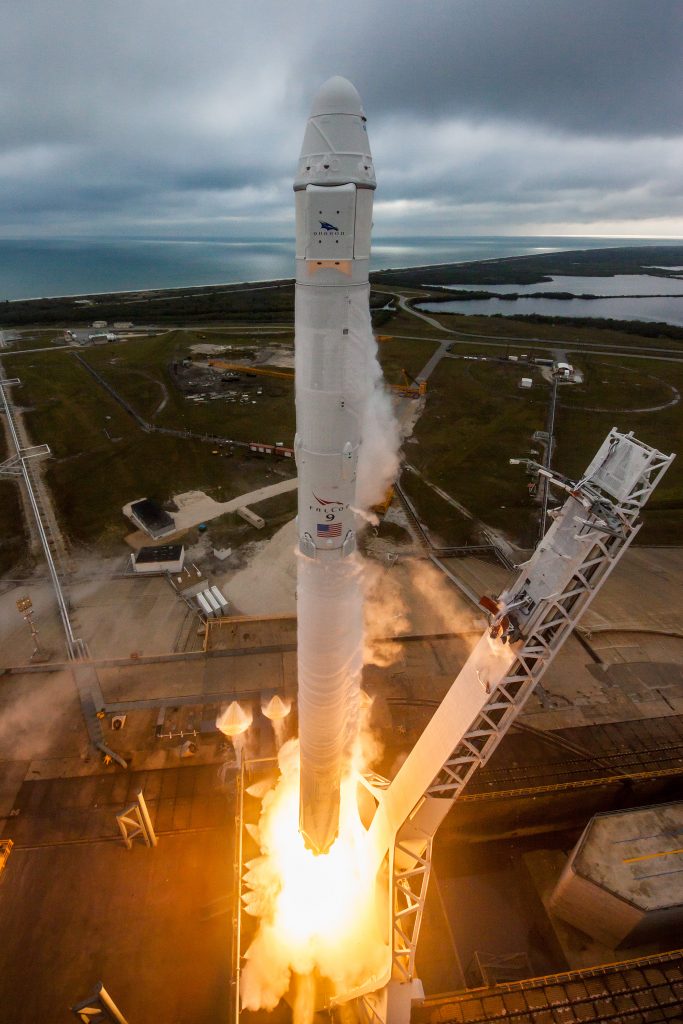
Dragon enjoyed a smooth ride as Falcon 9 headed into very cloudy skies over Florida’s Space Coast, firing its first stage for 141 seconds before the second stage started up for nearly seven minutes to head into orbit while the first stage booster went through three propulsive maneuvers to master its first daytime landing at Cape Canaveral’s Landing Zone 1. The Dragon was unleashed ten and a half minutes after launch and the second stage briefly re-started for a deorbit burn that was captured by puzzled observers in Iran and Kuwait.
Immediately after separation from the Falcon 9, Dragon primed its propulsion system and stabilized its orientation before jettisoning a pair of covers to reveal the craft’s solar arrays which then unfolded to re-charge Dragon’s batteries.
A slight re-orientation was completed to enable favorable communications through NASA’s Tracking and Data Relay Satellite System for a multi-hour checkout of the spacecraft and all its systems. The final critical item on the agenda for Flight Day 1 was the opening of the GNC Bay Door that protects the craft’s navigation sensors and holds the grapple fixture needed during Wednesday’s arrival at ISS.
Dragon spent Sunday and Monday in an orbit of 204 by 358 Kilometers, closing in on the Space Station over two dozen orbits around the planet to close a gap of nearly an entire orbit. On Tuesday, Dragon executed a Height-Adjust / Coelliptic burn pair, raising its orbit to 358 by 365 Kilometers where it continues to close in on ISS from behind and below ahead of initiating its rendezvous procedure in the early hours on Wednesday. The Space Station currently circles the Earth in an orbit of 399 by 408 Kilometers.
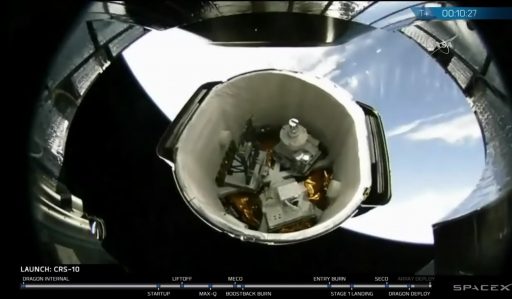
In the evening hours (UTC), Dragon will execute another pair of burns to achieve an orbit 2.5 Kilometers below that of the Space Station where it will continue to catch up until acquiring a space-to-space link with the Station for the exchange of GPS data for accurate navigation during the rendezvous.
NASA and SpaceX will enter into what is known as Integrated Operations before 7 UTC on Wednesday with NASA’s Mission Control Center at the Johnson Space Center possessing the overall authority over the day’s operations while SpaceX’s control team in Hawthorne is in charge of monitoring Dragon status and commanding the spacecraft. To set up for approach, Dragon will execute another pair of engine burns to reach an orbit 1.4 Kilometers below and behind ISS with a number of course corrections available prior to approach initiation burn.

Aboard the Station, Expedition 50 Commander Shane Kimbrough and ESA Astronaut Thomas Pesquet will begin monitoring Dragon’s approach once the spacecraft is inside 1,000 meters. They will have the ability to send commands to the spacecraft through the COTS UHF Communications Unit to halt or abort Dragon’s rendezvous should anything out of the ordinary occur at any step of the way.
An 0.3-meter per second impulse from Dragon’s Draco thrusters will mark the Approach Initiation, sending the vehicle on a trajectory from behind and below to a point directly below the Space Station, on the so called R-Bar, or radial vector, connecting ISS and the center of the Earth. Intercepting the R-Bar around two hours prior to Capture, Dragon will make a 180-degree yaw maneuver to properly position its thrusters for a posigrade abort maneuver.
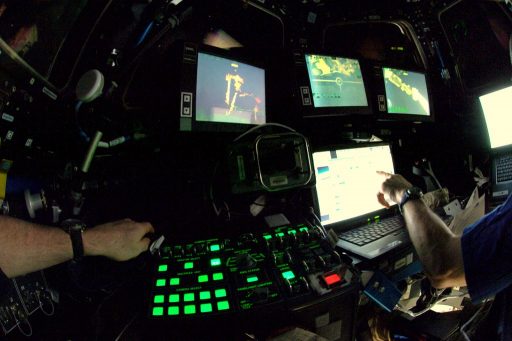
Ascending along the R-Bar, Dragon switches from Relative GPS navigation to its proximity navigation system that employs a LIDAR (Light Detection And Ranging) which bounces laser beams off reflectors on the Space Station for range and rate measurements while a thermal instrument collects infrared images of ISS processed to judge the relative geometry between ISS and Dragon. Data from the two sensors will be verified while Dragon holds steady at 250 meters – the first of two built-in pauses on the way to the capture point.
Once all checkouts are satisfactory, the crew will command the spacecraft to resume its approach, heading up the R-Bar to the next hold point that comes at a distance of 30 meters. While holding, Dragon’s LIDAR switches to single-reflector mode and the two crew members inside the Station’s Cupola prepare the robotic system for capture and reconfigure external cameras for final approach.
It will take Dragon around 15 minutes to cover the final 20 meters to the capture point, within reach of the Station’s 18-meter long robotic arm. Mission Control will verify that Dragon nulls out all relative rates before giving the crew a GO for capture, the last call made from the ground to allow the crew members to work at their own pace to set up for grapple.
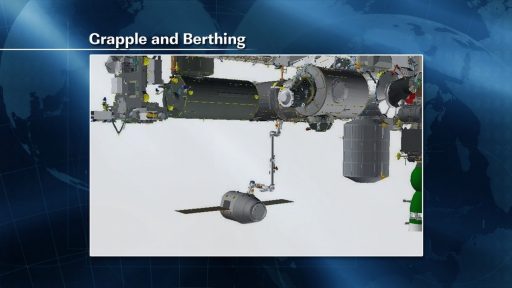
Thomas Pesquet will be tasked with the capture while Shane Kimbrough deals with communications and commanding of the spacecraft. Pesquet will use cameras on the arm’s latching end effector to align with the grappling pin on the Dragon before pulling the trigger and moving in for capture with Dragon going into Free Drift to prevent its thrusters from firing. The robotic arm will obtain a firm grip of Dragon by closing snares within the end effector.
After capture, the crew will hand robotics off to controllers in Houston to put Canadarm2 through a series of motions to line Dragon’s Common Berthing Mechanism up with the Station’s Harmony module, an operation taking several hours. Numerous checks will be made along the way including an inspection of the three rubber seals within Dragon’s hatchway that need to be intact to form an airtight pressure seal with the Space Station.
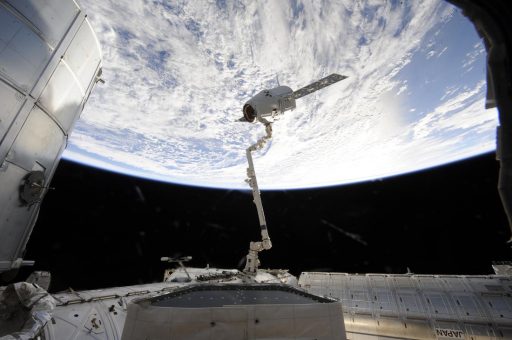
Using the Centerline Berthing Camera System, ROBO controllers will position Dragon with millimeter-accuracy before four capture latches can be closed within the berthing mechanism. With Dragon held in place on Node 2, the arm will be able to switch to limp-mode, giving the spacecraft some wiggle room to be pulled in as CBM bolts are driven. Four sets of four bolts will be driven to pull in the Dragon spacecraft and form the pressure seal between Harmony and the spacecraft.
With Dragon in place, the Station crew will swing into action again to conduct the usual leak check before heading into the vestibule outfitting task to connect Dragon to ISS power and data systems and remove equipment from the hatchway to clear access to the spacecraft. This ISS crew has been extremely efficient and will likely aim to open the hatch later on Wednesday if no problems are encountered over the course of the day.
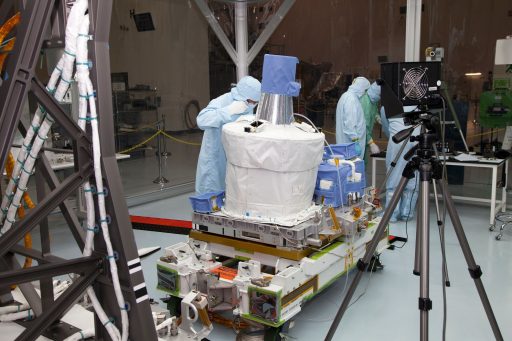
Dragon SpX-10 is largely dedicated to ferrying science equipment to the Space Station that is set for a busy summer with 300 individual studies planned over the next six months. Science hardware accounts for 732 Kilograms of Dragon’s cargo, nearly half of this mission’s pressurized cargo upmass of 1,530 Kilograms. The rest is comprised of the typical mix of ISS maintenance hardware (381kg), crew supplies including food (296kg) and EVA, computer and Russian hardware (43kg). The two external payloads, SAGE III and STP-H5, weigh in at 960 Kilograms and will be installed on the Space Station’s truss by Canadarm2 and the Dextre robot during Dragon’s stay.
Dragon is booked for a stay of around five weeks through late March to facilitate the transfer of cargo and a busy scientific schedule lined up for the crew to complete experiments that were delivered by Dragon and have to ride the same spacecraft back to Earth.

